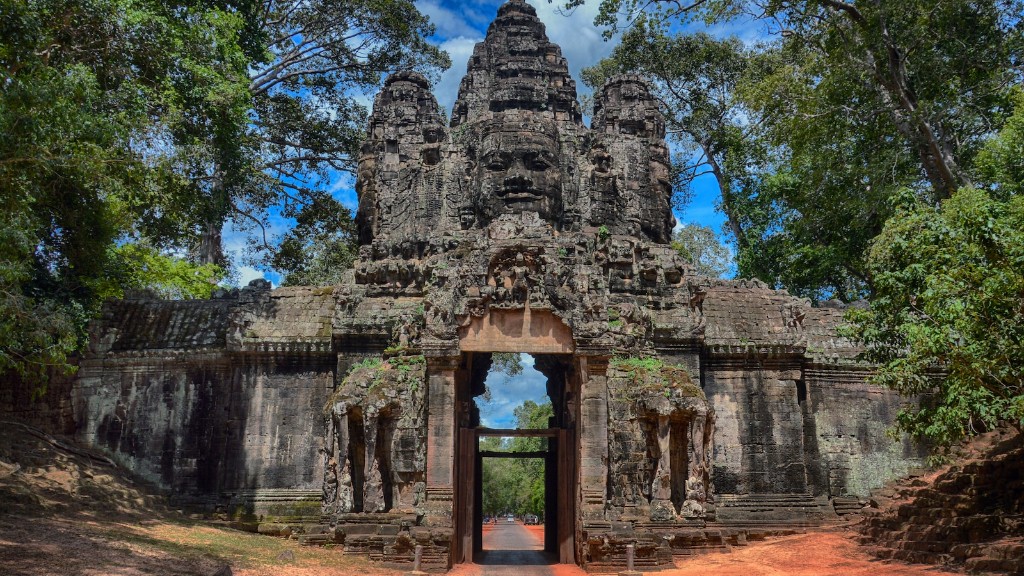Buddhism is a religion that began in India over 2,500 years ago. The founder of Buddhism was Siddhartha Gautama, who was born a prince. Siddhartha Gautama’s father kept him shielded from the outside world, but one day he was allowed to venture outside the palace walls and he saw poverty, disease, and death for the first time. Siddhartha Gautama was so affected by what he saw that he decided to leave his life of luxury to find a way to end the suffering that he had seen. Siddhartha Gautama became a monk and spent years meditating and searching for answers. He finally attained enlightenment and became the Buddha, which means “awakened one.” The Buddha taught his followers that the way to end suffering is to live a life of compassion, wisdom, and moderation. The Buddha’s teachings were passed down orally for centuries before they were written down, and they are contained in a collection of scriptures known as the Tipitaka.
Buddhism does not have a bible in the same way that other religions do. The closest thing that Buddhism has to a bible is a collection of scriptures called the Pali Canon. The Pali Canon is a record of the Buddha’s teachings and is used by monks and laypeople alike to study the Buddha’s teachings.
What is the Buddhist Bible called?
The Tripitaka is the sacred book of Buddhism, written in the ancient Indian language of Pali. This text is very close to the language that the Buddha himself spoke, making it a valuable source of information on his teachings. The Tripitaka is a large book, consisting of three main sections: the Vinaya Pitaka, the Sutta Pitaka, and the Abhidhamma Pitaka. Each section contains a wealth of information on the Buddha’s teachings, providing a comprehensive understanding of his Dharma.
The Tripitakas are the three main texts of Buddhism, which contains the teachings of the Buddha. The Vinaya Pitaka contains the rules and regulations for monks and nuns. The Sutta Pitaka contains the Buddha’s sermons and dialogues. The Abhidhamma Pitaka contains the Buddha’s philosophical teachings.
Why is there no Buddhist Bible
It is important to understand that the Buddha was not a god, but an enlightened master. His teachings are not the revealed word of any god, but are meant to help others achieve enlightenment. There are no Buddhist scriptures that are considered to be the absolute truth, but rather a guide to help one achieve buddhahood.
Dwight Goddard was an American writer who is best known for his book The Buddhist Bible. He was one of the first Westerners to study Zen Buddhism at a monastery in Kyoto, Japan, and he played a key role in introducing this religion to the United States. Goddard’s work helped to shape the way that many Americans view Buddhism, and his book remains an important source of information on this religion.
What do Buddhist believe about Jesus?
There are some high level Buddhists who have drawn analogies between Jesus and Buddhism. In 2001, the Dalai Lama stated that “Jesus Christ also lived previous lives”, and added that “So, you see, he reached a high state, either as a Bodhisattva, or an enlightened person, through Buddhist practice or something like that”. Thich
Buddhists believe that there is no one god or deity who controls everything. Instead, they believe that there are many different supernatural beings who can help or hinder people on the path towards enlightenment. Some of these beings may be friendly, while others may be more difficult to deal with. However, Buddhists believe that ultimately it is up to the individual to achieve enlightenment.
Which religion has no holy book?
Buddhism is a religion that is practiced by many people around the world. Unlike other major religions, Buddhism does not have a single authoritative book. Instead, there are multiple Buddhist canons in multiple languages. This can make it difficult to find reliable information about the religion. However, there are some great resources available that can help you learn more about Buddhism.
Buddhism is a religion and philosophy founded in the Indian subcontinent by Siddhartha Gautama (the Buddha) circa the 5th century BCE. Buddhism spread throughout Asia, and after the fall of the Han Dynasty in China (206 BCE–220 CE), it also spread to Korea, Japan, and Vietnam. The sacred book of Buddhism is called the Tripitaka (called Tipitaka in Pali). It is also called the Pali Canon, after the language in which it was first written. The ancient Indian language, Pali, is very close to the language that the Buddha himself spoke.
How do Buddhists pray
Being who the virtues I collect by giving in other perfections May I become a Buddha for the perfections I give.
The virtues I collect by giving in other perfections may include compassion, patience, wisdom, and so on. By becoming a Buddha, I perfect these virtues and can give even more to others.
Buddhism is a tradition focused on spiritual liberation, but it is not a theistic religion. The Buddha himself rejected the idea of a creator god, and Buddhist philosophers have even argued that belief in an eternal god is nothing but a distraction for humans seeking enlightenment.
Why do Buddhists not talk?
Noble silence is a powerful tool that Buddhist monks and nuns use to condition their minds to be mindful of the words they speak. By remaining silent, they are able to make a stand against something or to show their support for it.
There is no concept of sin in Buddhism. This is because Buddhism does not believe in the existence of a separate self or soul. Instead, Buddhism teaches that we are all interconnected and that everything we do affects others. Therefore, there is no such thing as a personal transgression that can be separate from the rest of the world.
What are the 3 main beliefs of Buddhism
Buddhism is a religion that is based on the teachings of Siddhartha Gautama. The main principles of this belief system are karma, rebirth, and impermanence. Buddhists believe that karma is the force that governs how people are reincarnated. They also believe in rebirth, which is the idea that people are reborn into different forms after they die. Finally, Buddhists believe in the principle of impermanence, which is the idea that everything in life is temporary and will eventually come to an end.
The Gandhāran Buddhist texts are the oldest Buddhist manuscripts yet discovered, dating from about the 1st century BCE to 3rd century CE. They were sold to European and Japanese institutions and individuals, and are currently being recovered and studied by several universities.
These texts are important for understanding the early history of Buddhism, as they represent some of the earliest examples of Buddhist thought. They also provide insight into the development of Mahayana Buddhism, which emerged in the Gandhāran region in the 2nd century CE.
What is the Buddhist holy text?
The Tripitaka, Mahayana Sutras, and the Tibetan Book of the Dead are three major essential holy Buddhist texts. The Tripitaka is the oldest and most authoritative of the three, and contains the core teachings of the Buddha. The Mahayana Sutras are a later compilation of the Buddha’s more advanced teachings, while the Tibetan Book of the Dead is an essential text for Tibetans who practice Buddhism.
In Buddhism, there is no concept of punishment or reward. There is merely the illusory results of our thought, words and deeds, which we call karma.
Conclusion
No, Buddhism does not have a bible.
There is no one answer to this question as Buddhism is not a single religion but an umbrella term for various traditions, schools, and practices. While some form of written scripture is used in some Buddhist traditions, others do not have a “bible” as such. In addition, the interpretation of any scriptures that exist can vary widely among different Buddhist groups. Therefore, it is difficult to say definitively whether or not Buddhism has a bible.




